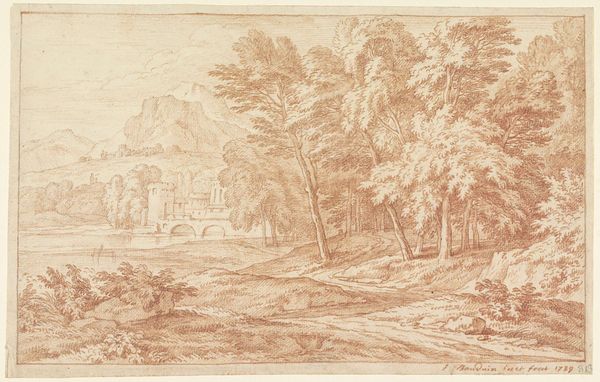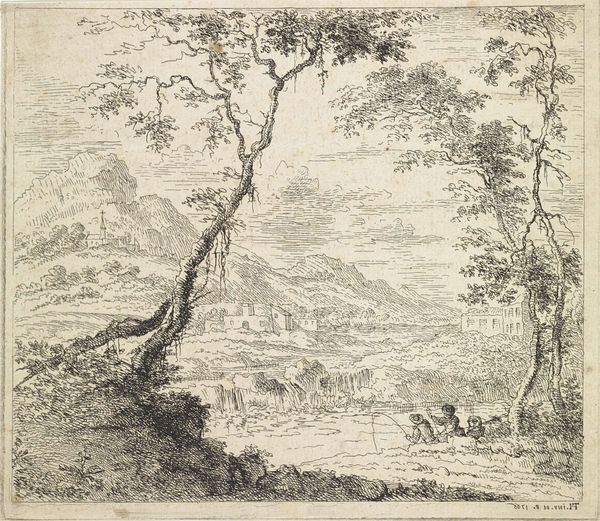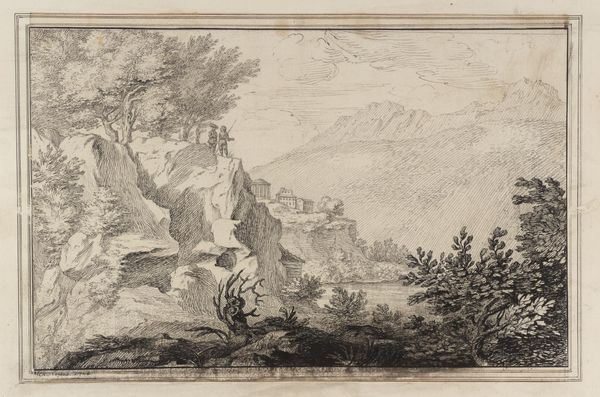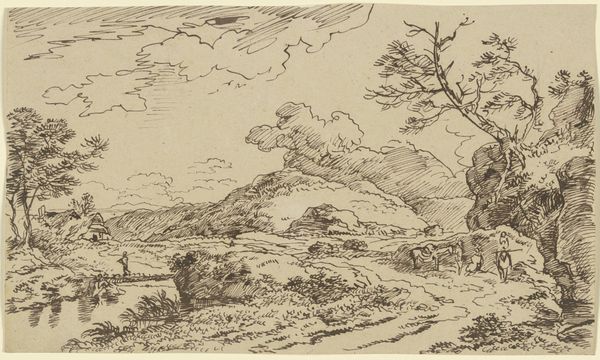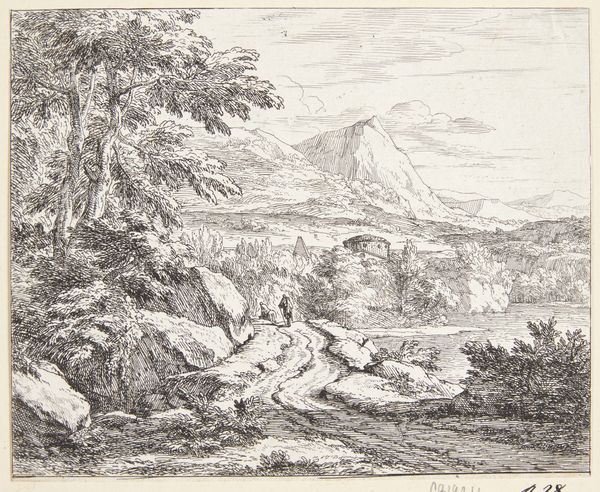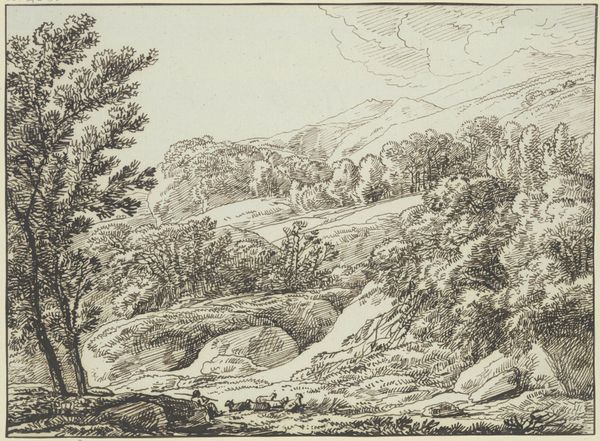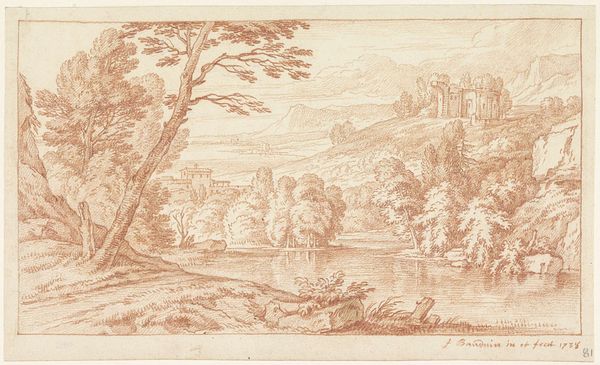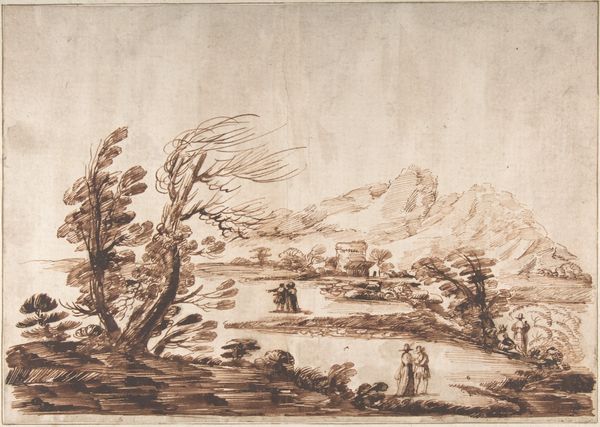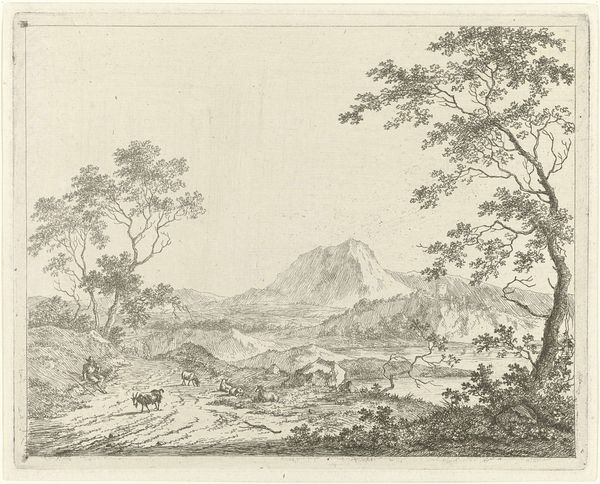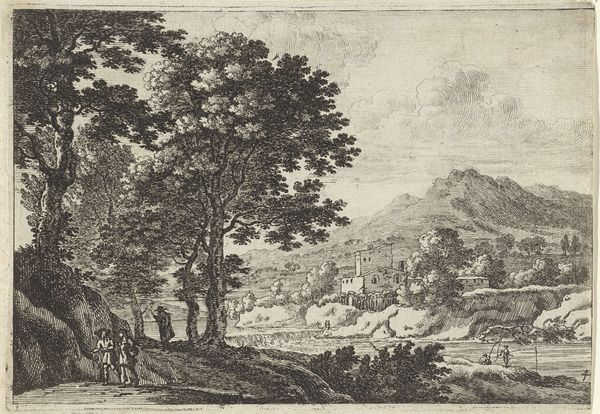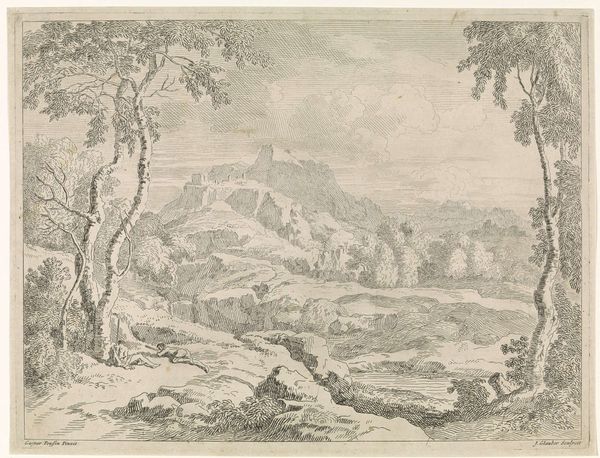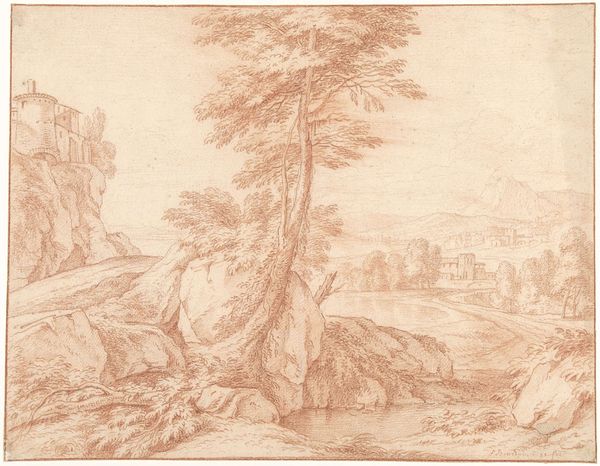
drawing, print, etching, paper
#
drawing
#
baroque
# print
#
etching
#
landscape
#
etching
#
paper
#
realism
Dimensions: height 192 mm, width 310 mm
Copyright: Rijks Museum: Open Domain
Curator: At first glance, this feels like a faded memory, like a dream half-recalled, painted with sepia-toned longing. Editor: This is Frans Boudewijns' "Landschap met een dorp aan het water," created in 1736. It's an etching on paper, a charming example of Baroque landscape. The delicate lines create a real sense of depth, don’t you think? Curator: Oh, absolutely. That aerial perspective is masterful. Boudewijns has pulled off that slightly melancholic stillness—a perfectly captured instant just before the world erupts with sound and movement. Did many artists use this etching style at this time? Editor: The etching technique was popular for its ability to capture fine details and textures. What strikes me is the structured composition— the placement of that village set against the dramatic backdrop, and of course, the organic lines of the trees in the foreground, anchoring the eye. It really follows a classical, almost theatrical layout. Curator: It's as though he’s staged this little scene. The human presence is subtle, but it draws me in: are those wanderers heading down the hill toward the water, towards their destiny perhaps? I like that interplay, it adds so much. But more generally, I appreciate art's potential to transport us to another time and place, and even imagine new dimensions to our experience. Editor: Indeed, that notion of being transported feels relevant to my earlier impression of faded memory. Notice how he uses a singular tone in a detailed way. It also directs how the image as a whole is understood by subtly flattening areas of depth to focus on smaller narrative-like moments. Ultimately, this evokes, at least for me, a sense of serenity despite, or perhaps due to, the intricate composition. Curator: A good reminder to consider how a certain material handling relates to the big picture, whether visual or beyond! Editor: Absolutely! Sometimes art history is less about historical precision than it is about creative play!
Comments
No comments
Be the first to comment and join the conversation on the ultimate creative platform.
